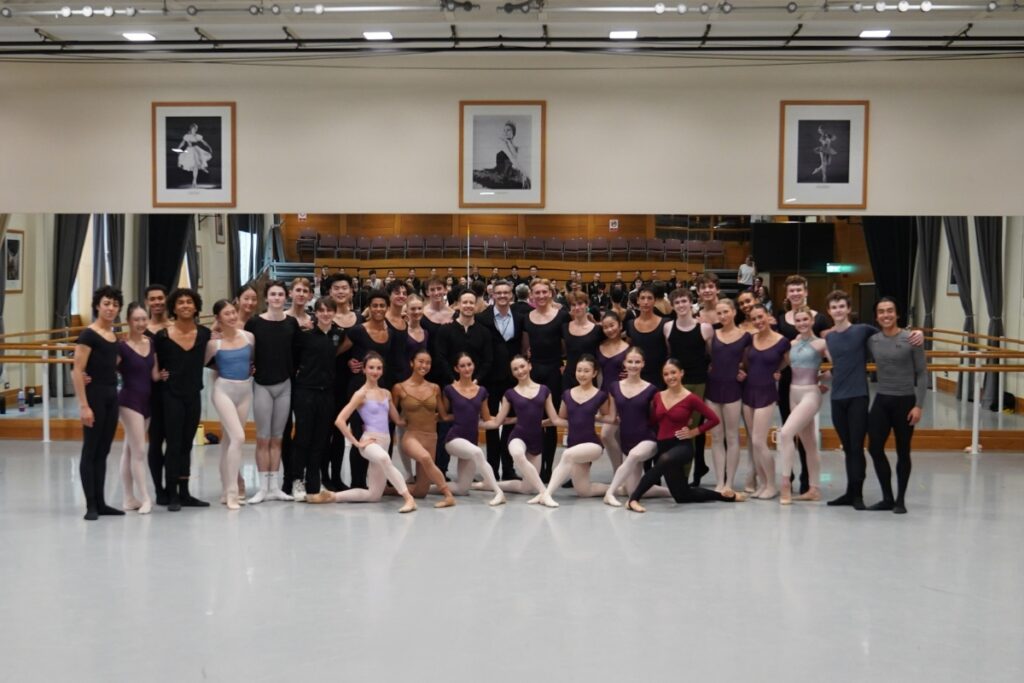Relative Energy Deficiency in Sport (REDs)
From 18 to 22 November, The Royal Ballet School is spotlighting Relative Energy Deficiency in Sport (REDs) to raise awareness and support our students’ health and well-being.
With 67% of athletes at risk of REDs, we understand the importance of preparing our dancers for success and equipping them with the tools to manage the demands of vocational training, fuelling, and energy balance.
At The Royal Ballet School, we’re passionate about REDs prevention. Throughout this week, we will be highlighting different aspects of REDs and how to best prevent, manage and support the complex condition.
What is REDs?
REDs is a syndrome affecting males and females who experience insufficient energy availability, meaning their bodies lack the energy needed to fulfil their normal physiological functions. REDs occurs due to an imbalance between caloric intake and energy expenditure—knowingly or unknowingly. While anyone who is physically active is at risk of REDs, dancers are at higher risk because of:
- High training loads
- The perceived aesthetic requirement for dancers may lead to under fuelling
- Higher rates of disordered and restrictive eating behaviours
- Insufficient recovery periods in rigorous dance schedules.
REDs can also occur when an athlete underestimates the energy requirements of exercise or inadequate timing of nutrition, which can be common in dance and other endurance sports.
How does REDs affect dancers?
REDs can affect any active individual, not just elite athletes, and impacts an individual’s endurance, strength, health and well-being.
When energy availability is low, and performance is impacted, the body starts to down-regulate some of the lower-priority systems, such as the reproductive system. The knock-on effect is seen in many other systems, such as immune health, hormones, mental health, muscles and connective tissues, and bone density.
This not only affects a dancer’s ability to perform in the studio but also significantly increases their risk of injuries and illnesses. Injuries such as bone stress injuries or stress fractures are particularly common and can often result in dancers missing weeks or months of training.
Recognising the symptoms of REDs
It’s important to recognise early signs and symptoms of REDs early, which may include:
- Fatigue
- Difficulty with concentration or focus
- Irregular menstrual cycle
- Weight loss
- Increased frequency of illness
- Feeling of underperforming in class and inadequate recovery
- Awareness of inadequate fuelling.
REDs affects dancers in different ways and can present to a healthcare professional with different symptoms or problems. Identifying the signs and symptoms of REDs early can prevent serious injury and illness, helping keep dancers healthy and in the studio doing what they love.
Preventing and managing REDs
REDs is preventable, and it is essential for dancers to be aware of the effects of low energy availability and its impact on performance.
Proper nutrition is the most effective approach to mitigating the impacts of REDs. Dancers should choose appropriate foods and create behaviours and nutrition strategies that support a positive relationship with food to meet the energy requirements for health, growth, and performance.
Our School Nutritionist, Louise Gubb, works closely with students to support fuelling, post-training recovery and managing their energy requirements. Dancers are encouraged to consume a minimum of three balanced meals and three snacks daily, consisting of ample carbohydrates, fats, protein, vitamins, and minerals. It’s also important that dancers fuel strategically and understand hunger cues may be suppressed due to high training loads. It’s also important to consider the timing, type, and total amount of nutrition and hydration needed throughout the day.
By supporting our dancers with nutrition education, training adjustments and recovery time, we can increase the energy availability of someone suffering from REDs.
What is The Royal Ballet School doing?
REDs is a complex condition that requires a multidisciplinary team to treat. With over 20 leading healthcare professionals, the Healthcare Team at The Royal Ballet School work together to educate, support and manage our dancers to optimise their health and performance in both the short and long term.
Treatment is on a very individualised basis, and our Healthcare Team investigate the different systems affected by REDs, which could be in the form of a blood test or various scans, and provide students with holistic treatment for their physical, emotional and nutritional needs to help re-address the energy deficiency. The Healthcare Team and Artistic Team collaborate to monitor our students wellness daily through our Smartbase app, and manage students’ training load to ensure they are getting enough recovery.
For more resources on REDs, visit Project REDs and Health for Performance.





